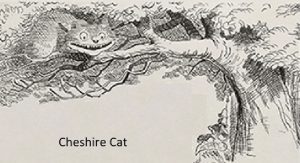4.4.5, BU clearly establishes how everything, including objects, actions, interactions, thoughts, emotions, feelings etc. etc., in short our entire ‘perceptual knowledgebase’ gleaned from the time-space-causational world we are familiar with and live in, is merely upahita caitanya (conditioned Consciousness). Continue reading
Author Archives: Ramesam
What is ‘brahman’ like?
We all know that ‘brahman‘ being ‘avAngmanasagocara‘ (अवाङ्ग्मनसगोचर – 1, vedAntasAra), is ‘beyond the reach of words and thought.’ It is NOT available for perceptual knowledge either through the five senses or the mind within this time-space-causational world we live in and interact with. Hence, there is no way to show brahman, “It is like this” by pointing with a finger.
The kena Upanishad admits this fact openly; it says, “We don’t know how to teach It.” – (1.3).
The mANDUkya Upanishad speaks about It in apophatic terms for a little while, but hastens to declare that “It is inexpressible” and even adds, “It is unthinkable” – (mantra 7) !
However, the brihadAraNyaka sticks its neck out and gives not one or two, but three illustrations to show how brahman is like.
Gems From 1.4.7, BUB
“He who meditates upon each of the totality of aspects of the Self does not know. The Self alone is to be meditated upon, for all these are unified in It. Of all these, this Self alone should be realized “– 1.4.7, BU
Shankara has written one of his longest of commentaries on the mantra at 1.4.7, brihadAraNyaka Upanishad. He presents therein a very lucid, comprehensive and highly instructive account of the entire spectrum of Advaita teaching — right from the origination of the manifest manifold to its sublation and attainment of liberation. I feel that it is a “must-study” for all earnest seekers. I recapitulate below a few of the Gems that I could glean from his bhAshya.
1. All Vedic means consist of meditation and rites. They are co-extensive with this manifested, relative universe. They depend on several factors such as the agent. They culminate in identity with Hiranyagarbha. It’s a result achieved through effort. Continue reading
Who “Listens” to the Vedanta vAkya – ‘tattvamasi’?
[Background: This Post is a sequel to the Discussions at Q: 541 with regard to “Who or what is that which listens to the mahA vAkya ‘tattvamasi’ and Who really gets “It”?” My reply to that question, based on 18.114, upadesha sAhashrI of Shankara, was that “It is the Inner Self Itself which “listens” to the Non-dual message.” Dennis and Venkat made some significant observations on this issue and I found myself inadequate to answer their points.
So, I took the liberty to refer the matter to three highly knowledgeable and well-read Vedantins who are also proficient in Sanskrit. They had been extremely kind to readily spare their time amidst their own preoccupations and to share their views on this profound subject. Their in-depth analysis and exposition backed by authentic citations is too valuable and important to stay tucked in my files and deserve wider dissemination. Hence, I present below, as an expression of my gratitude, their Comments which will undoubtedly be beneficial to many seekers.]
Smt. Manjushree Hegde Ji (India):
You’ve chosen the toughest chapter of the toughest text! Continue reading
“sadyomukti” (Instant Liberation) – 2/3
2. ‘sadyomukti‘ in Shankara bhAShya:
Shankara tells us at over a score of places in his bhAShya-s that brahman by Its very intrinsic nature is:
नित्यशुद्धबुद्धमुक्तस्वभाव: | — Shankara in his commentaries at BSB; BGB; BUB; muNDaka B; mANDUkya B; &c.
Meaning: By nature eternal, pure, intelligent and free.
What we are in essence being non-different from brahman, we are also ever “free.” But, unfortunately, lacking a sense of ‘discrimination,’ as Shankara explains in his Intro (called ‘adhyAsa bhAShya’) to the Vedanta sUtra-s, we mix up what is “Real” with the “unreal.” As a result, we feel we are “bound and limited.” In addition, we take it for granted that we are, by birth, bound within a beginningless and apparently endless nescience. However, having received instruction from a compassionate teacher (vide 6.14.2, chAn.U,), and working diligently with discrimination, we shed our imaginary shackles and figuratively attain our natural freedom. Continue reading
‘adhyAropa’ to ‘adhiSThAna’ – 4/4
 What happens by the ascertainment of the implied meaning of the words in the sentence “You are That”?
What happens by the ascertainment of the implied meaning of the words in the sentence “You are That”?
Just as the idea of a snake is negated from a rope (in the snake-rope analogy), everything of the nature of non-Self is negated from the eternally existing Self implied by the word “I.” In other words, ‘ignorance’ vanishes (immediately on the attainment of right Knowledge) – 18.4-5, US.
In addition, the (false) conception of the pain with regard to the Self vanishes forever when the right Knowledge of the Self arises like all kinds of pain which is experienced in a dream comes to an end as soon as one wakes up.
What action should I take to augment my “understanding” and attain brahman?
Shankara tells us,
चतुर्विधमेव हि सर्वं कर्म कार्यम् — उत्पाद्यमाप्यं विकार्यं संस्कार्यं वा । – 1.2.12, muNDaka B.
Meaning: All the effects of actions are of four kinds: Production; Acquisition; Modification; and, Purification. Continue reading
‘adhyAropa’ to ‘adhiSThAna’ – 3/4
 It is said that brahman Itself gets deluded by Its own magic. Does it not then imply that there is really creation and a (created) world out there?
It is said that brahman Itself gets deluded by Its own magic. Does it not then imply that there is really creation and a (created) world out there?
Shankara is never tired of pointing out that there is actually no creation at all and the purpose of all the scriptures, when they talk of creation, is NOT to establish creation as a fact. For example:
1. न चेयं परमार्थविषया सृष्टिश्रुतिः ; अविद्याकल्पितनामरूपव्यवहारगोचरत्वात् , ब्रह्मात्मभावप्रतिपादनपरत्वाच्च — इत्येतदपि नैव विस्मर्तव्यम् ॥ — 2.1.33, BSB.
Meaning: “The Vedic statement of creation does not relate to any reality, for it must not be forgotten that such a text is valid within the range of activities concerned with name and form called up by ignorance, and it is meant for propounding the fact that everything has brahman as its Self.” Continue reading
‘adhyAropa’ to ‘adhiSThAna’ – 2/4
[Part – 1]
When and how does the process of ‘imagination’ (creation/projection) happen?
Shankara contends in his ‘adhyAsa bhAShya’ (Intro to his ‘Commentary on the brahma sUtra-s) that the formless, featureless and functionless, unbounded, immutable Beingness does not ‘cognize’ or ‘act’ unless Its Infinitude is somehow compromised. He writes, “The unrelated Self cannot become a ‘cognizer’ unless there are all these mutual superimpositions of the Self and the body and their attributes on each other, because perception and other activities (of a man) are not possible without accepting the senses etc. (as his own); the senses cannot function without (the body as) a basis; since nobody engages in any activity with a body that has not the idea of the Self superimposed on it.” [Slightly re-arranged the clauses for easy comprehension.] Continue reading
‘adhyAropa’ to ‘adhiSThAna’ – 1/4
 राजविद्या राजगुह्यं पवित्रमिदमुत्तमम् ।
राजविद्या राजगुह्यं पवित्रमिदमुत्तमम् ।
प्रत्यक्षावगमं धर्म्यं सुसुखं कर्तुमव्ययम् ॥ — 9.2, BG.
[This is the Sovereign Knowledge, the Sovereign Profundity, the best sanctifier; directly realizable, righteous, very easy to practice and imperishable.]
What is this world that is available for our experience?
“The world is a ‘superimposition’ (adhyAropa). In other words, it merely appears to be present but does not really exist. It is like ‘casting forward’ a non-existing or unreal “form” (objects) onto the Eternal, Immutable and Real ‘Substratum’ (adhisThAna) or the Supreme Self,” avers the Advaita Vedanta. Because of our inherent inability to know what “exactly” out there, our intellect ‘confabulates’ what could be present out there and ‘externalizes’ the imagined ‘form’ as a projection.
Shankara in his introduction to the Vedanta aphorisms (sUtra-s) explains to us that this ‘superimposition’ is natural (naisargika) to us – i.e., it exists from our birth itself. Left to itself uninvestigated, adhyAsa seems to have no locatable or known beginning-point (hence, anAdi); nor an end-point (hence, ananta).
No meaningful answer can be given to a question like “What is north of North Pole?” Similarly, a point of ‘beginning’ cannot be indicated for something which is outside of our familiar time-space dimensionality. “anAdi” also implies that it lies beyond our time-space framework. As a result, we find ourselves inexorably caught up in its snares and suffer the consequences as helpless victims trapped within the jaws of a mighty ‘diaphanous power.’
A superimposition or a projection is, however, an ‘action.’ There cannot be an ‘action’ without an ‘agent’ who does the act.
If I am just a ‘victim’ and not the doer of this projection, who is the ‘agent’ that does the ‘superimposition’? Continue reading
Ignorance Goes, but mAyA remains – Revisited
 Ask any teacher of Non-duality the question “Why we see a multiplicity of objects instead of Oneness in the world?,” pat comes back the reply that “It is all due to mAyA, an inexplicable and indefinable power of the Creator God, Ishwara. mAyA is so much reified and deified in some texts that they present it almost as a given “fact.” They romanticize mAyA; sing paeans in lilting poetry as a Divine Goddess vested with special powers – that of concealment of the Truth and projection of an unreal world filled with variegated objects (e.g. 110-111, vivekacUDAmani).
Ask any teacher of Non-duality the question “Why we see a multiplicity of objects instead of Oneness in the world?,” pat comes back the reply that “It is all due to mAyA, an inexplicable and indefinable power of the Creator God, Ishwara. mAyA is so much reified and deified in some texts that they present it almost as a given “fact.” They romanticize mAyA; sing paeans in lilting poetry as a Divine Goddess vested with special powers – that of concealment of the Truth and projection of an unreal world filled with variegated objects (e.g. 110-111, vivekacUDAmani).
But Gaudapada in his kArikA-s on mANDUkya and Shankara in his commentary on them regard mAyA to be no more than an explanatory artifact. Gaudapada mentions ‘mAyA‘ in the sense of a magic-show in the last chapter of his kArikA-s. For example: Continue reading
